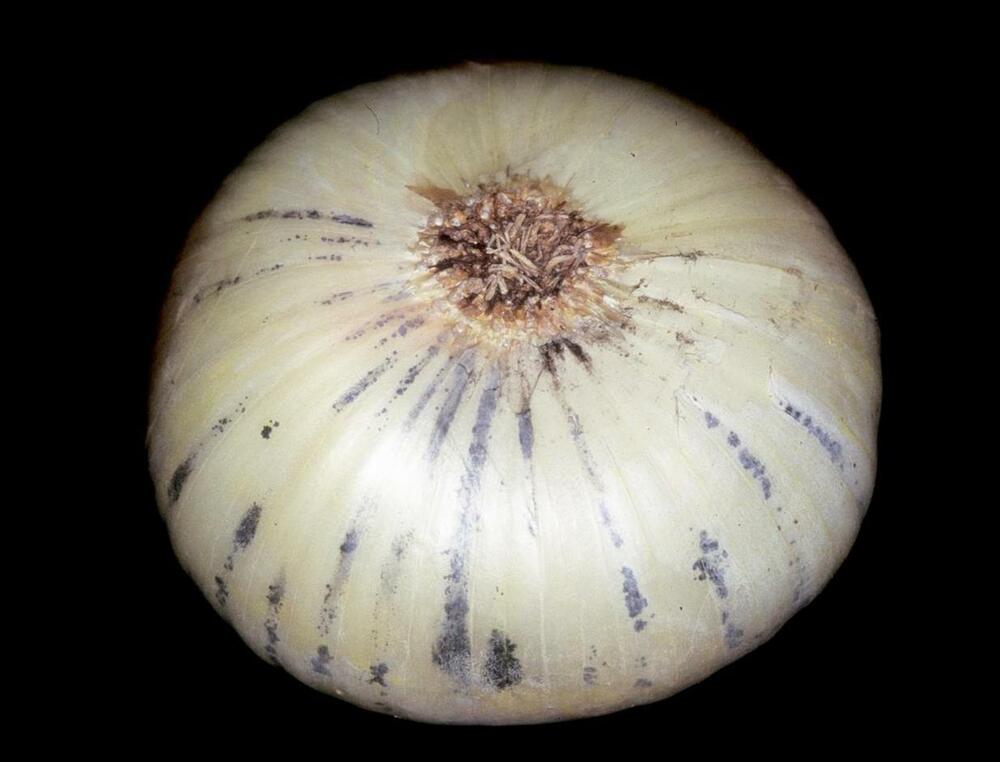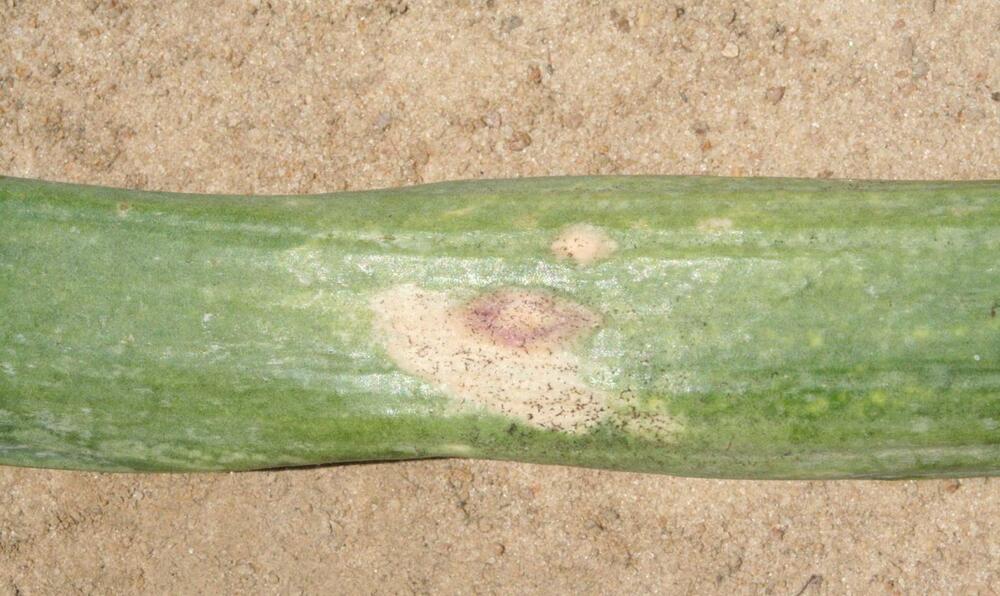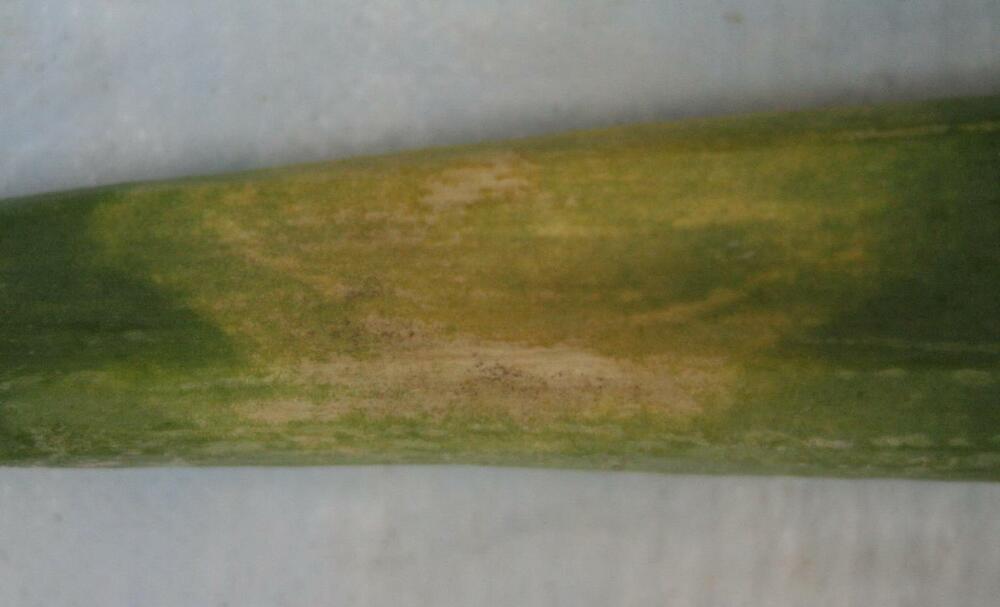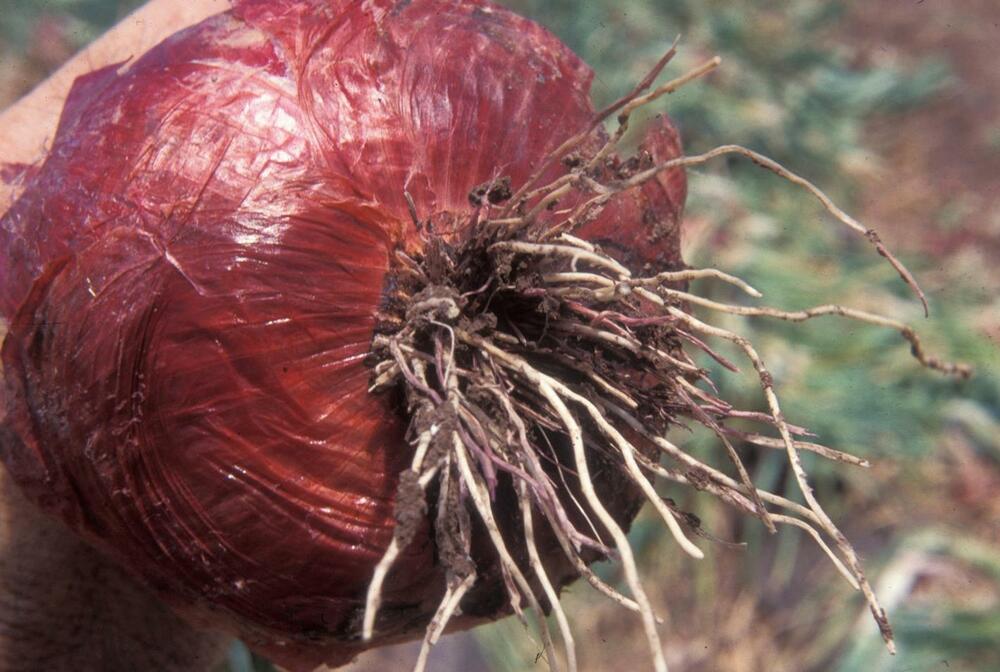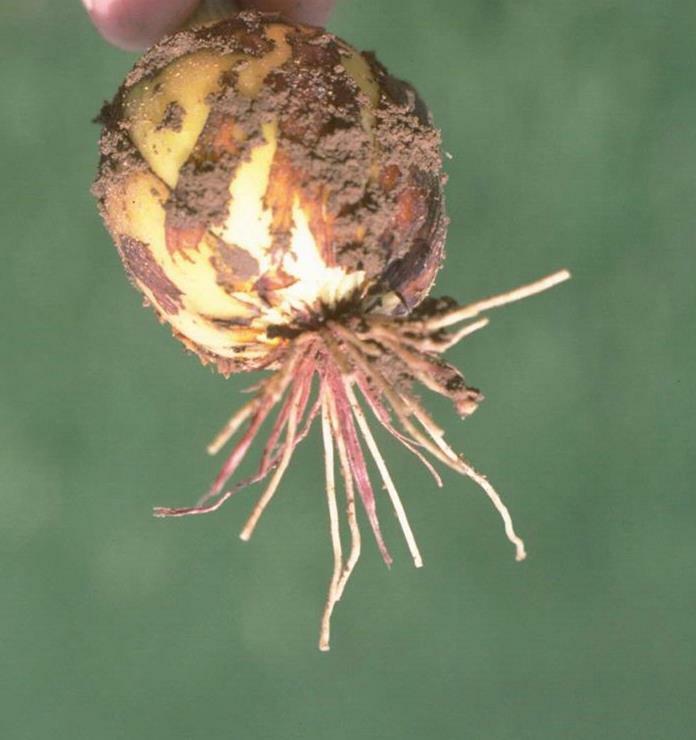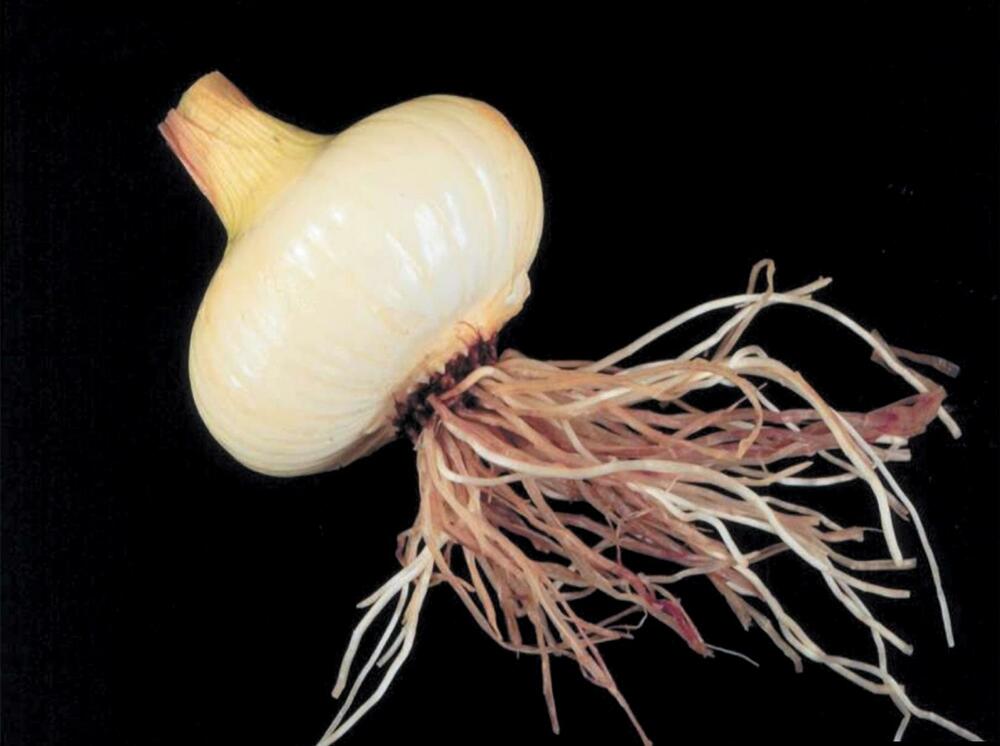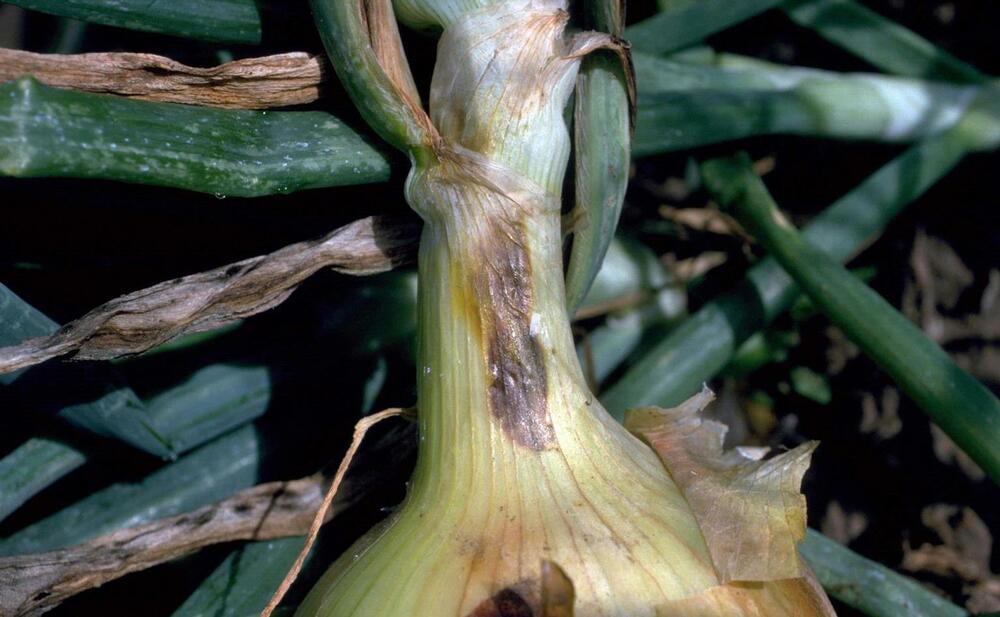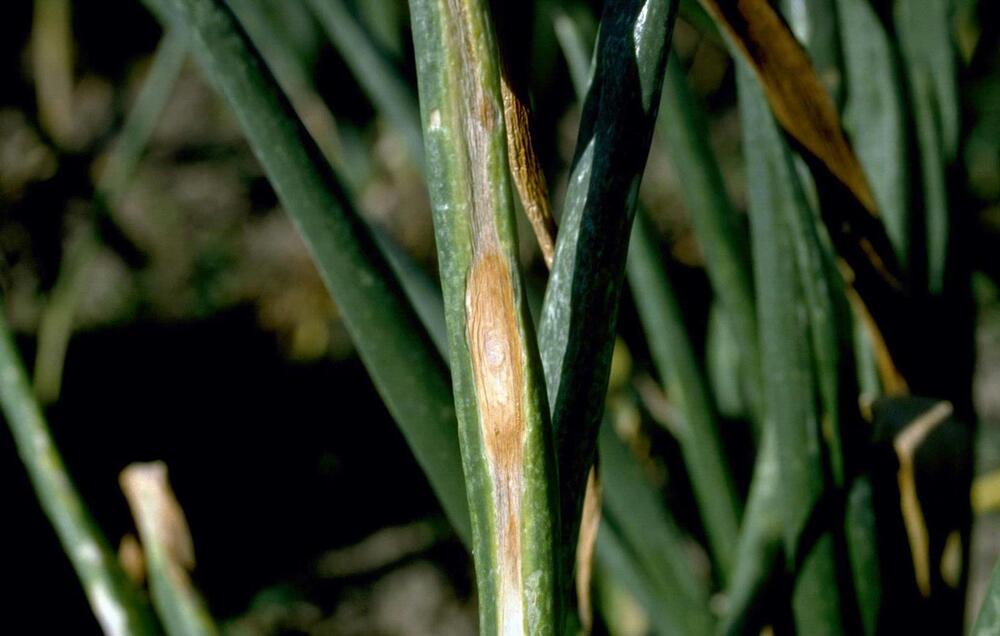Onion
Description.
Crop details
The following are the crop details for onion.
Local Names: Kitunguu, (Swahili), Gitunguru (Kikuyu) Kitunguru (Maragoli).
Scientific Name: Allium cepa
Order: Asparagales
Family: Amaryllidaceae
Subfamily: Allioideae
Genus: Allium
Species: A. cepa
Other names: bulb onion or common onion
General Information
Being a biennial vegetable onion is grown as an annual in temperate zones. The varieties that thrive in the tropics are effectively annuals because they can produce seed within the first year of growth.
The plant's stem is a flattened disc with tubular leaves that form a pseudo stem where their sheaths overlap. There are 3-8 leaves per plant that are either erect or oblique. The plant produces p ink or white flowers cluster on its stalks. The bulbs are formed just above the flattened stem of the plant by overlapping leaves.
Onions may also be referred to as cultivars and these include red or purple onions, shallots, and spring onions or scallions. They are particularly suited to smallholder farming in most countries.
In the tropics onions can be grown year-round where irrigation is possible.
The bulb is made up of layers, each of which corresponds to a leaf. They are generally oval, but their shape can vary, and they appear in clusters of 3-18 per plant. It is shielded by a membrane that transforms into a paper coat. Onion plants can grow to a height of 50 cm (20 in) and are grown as annuals, harvested after one growing season; however, in the tropics, onions can be grown year-round if irrigation is available.
Varieties
The history of ancestral onion species is not well documented. Ancient records of onion use span western and eastern Asia, so the geographic origin of the onion is uncertain. Yet, domestication likely took place in West or Central Asia. Onions have been variously described as having originated in Iran, western Pakistan and Central Asia.
Onion Varieties in Kenya
Red Creole: This is a popular standard variety in high demand because of its good keeping quality. It produces mainly single onions from transplants, red, flat-round, and with a pungent taste.
Red Tropicana: Red bulbing type
Red Tropicana F1 Hybrid: Produces large, red, thick flat onions with firm pungent flesh. It is highly productive and therefore demands high levels of management. It keeps well in a dry aerated store.
Bombay Red: It is a variety of dry and warmer conditions. It is small to medium-sized, globe-shaped, purplish red, and pungent.
Yellow Granex FI Hybrid: This is an early maturing high yielding attractive, thick flat onion with thin yellow scales. The flesh is medium firm, crisp, and mild in flavor. The shape and size are uniform leading to higher market prices, and the storage quality is good.
Texas early Grano: This is a fresh market, early maturing variety (100 - 120 days) with a rather short shelf life. It is yellowish, mild, and not very pungent. The bulbs are high-top shaped with dry yellow scales. It is a heavy yielder for high-altitude regions. Ideal for fish salads.
White Creole: This is a white variety normally used for dehydration.
Green bunching: non-bulbing spring onion. It has attractive tasty dark green leaves. It is an early and highly productive onion grown for stems rather than bulbs. It is tolerant to sun scotch and it is recommended for salads and fresh markets.
Onion Varieties in East Africa
In Tanzania, Red Bombay is the most popular onion variety. Its production is highest in March, May, and December and is predominantly sourced from Mang’ola.
Other popular varieties grown in the East Africa region include Red Pinoy F1, Red Creole, Bombay Red, and Texas Early Grano.
Climate Conditions, Soil, and Water Management
In temperate zones, onion is a cool-season biennial and is tolerant to frost. They produce bulbs with growing day lengths. Optimum temperatures for plant development are between 13 and 24°C, although the range for seedling growth is narrow, between 20 and 25°C. High temperatures favor bulbing and curing. In the tropics, only short-day or day-neutral onion varieties will form bulbs. These thrive in warm to hot climates of 15-30°C. If the temperature greatly exceeds that required for bulbing, maturity is hastened and bulbs do not grow to maximum size, consequently lowering the yields.
Onions can be grown on any fertile, well-drained, non-crusting soil. The optimum pH range is 6.0 to 6.8, although alkaline soils are also suitable. Onions do not grow well in soils below pH 6.0. On light sandy soils, irrigation is necessary. Irrigation could be either overhead or on a drip. Onions at the bulbing stage need a substantial amount of water, but excessive moisture must be avoided during the growing season. Avoid the application of fresh manure to the crop, as this will cause the plants to develop thick necks and too many leaves at the expense of bulb formation.
Uses
The bulb is an edible vegetable and is the most commonly used part of the onion, usually consumed after cooking although it can be eaten fresh. The stems and leaves are also edible. In general, onions are used for salads (bunching onions or sliced full-grown bulbs), pickling (e.g. silver skin onions), cooking (such as in soups), and frying (for example, with meat). It also plays an important role in traditional medicine (e.g. as a diuretic).
Planting Procedure
The planting procedure for onion is as follows:
A grower must consider several factors when planting onions, among them are onion varieties. Onions can be planted in three different ways: by sets transplants or direct seeding. Sets are grown from seeds, producing small bulbs before going dormant.
Planting sets and transplants can be advantageous because they are ready to harvest one to two months earlier than onions planted directly. Planting in sets and transplanting is much more expensive than direct seeding.
Harvests can be completed earlier in the year when using transplants or sets, which may result in higher profits if the market demand for the produce is higher. Planting sets or transplants necessitate the use of specialized planting equipment. It is necessary to consider the cost of acquiring the necessary equipment.
In some environments, using sets and transplants exposes the onion to environmental pressures for a shorter period of time, reducing the need for weed and pest control. A precision seed drill and other onion handling equipment are required for direct seeding. For direct seeding, the soil must be tilled, smoothed, and leveled prior to seeding.
The ideal soil site is well-drained and has a nearly neutral pH (6.6-6.8). (Growing Onions). Direct seeding requires that each seed be planted at the same depth below the soil surface in order for it to germinate and grow uniformly. Typically, seeds are planted 1 inch deep.
Planting Systems
Nursery seeding and transplanting is the most common and practical option in the tropics. Transplants normally have 3 to 5 well-formed leaves at transplant time. Roots are pruned during planting, in order not to be bent upwards when transferred to the field. This facilitates early establishment of the plant.
Any germinated bulb of the above-mentioned varieties would produce 3-6 good size bulbs in about 3 months when planted with the rains. Choose only healthy bulbs for propagation.
Sets are used in some areas in the temperate zones to ensure large bulb size and uniform maturity. Sets are small dry bulbs, approximately 12 mm in diameter, which have been produced the previous season by seeding thickly or growing under conditions that favor rapid bulbing.
Direct seedling is possible and gives excellent results where herbicides can be used and the season is sufficiently long to provide early pre-bulbing growth. In the tropics this method is impractical due to enormous weeding costs in an organic system.
Husbandry
Do not plant onions after the field has been planted with other Allium plants (e.g. garlic). Mulching onions with composted leaves and straw is highly recommended to maintain soil organic content, prevent soil-borne diseases, and suppress weeds. Planting onions in raised beds improve drainage and prevents damping-off diseases.
Weeding and harvesting are mostly done by hand, although chemical weed control is possible but not organic. Weed control is a critical part of onion production. Common weeds that affect onion and garlic include yellow nutsedge, field morning glory, cheeseweed, chickweed, henbit, lambs quarters, marestail, pigweed, purslane, shepherdspurse, annual bluegrass, barnyardgrass, and foxtail. Onion transplants and seedlings do not compete well with weeds, so hand cultivation or herbicides are necessary if weeds are a problem. Crop rotation is important to avoid the build-up of pests and diseases such as nematodes, Sclerotium and Fusarium.
Harvesting
Harvesting takes place 90-150 days after sowing. Onions are ready for harvest when the leaves collapse. Alternatively, the leaves can be bent over and left to dry for 10-12 days. The crop is pulled out by hand and kept for some days in the field with the bulbs covered by the leaves (= windrowing). The leaves are then cut off and the mature bulbs are bagged or packed in crates if they are to be stored.
Freshly harvested onions are dormant and will not sprout for a variable period (this depends on the variety). Storage will extend the dormant period. Sprouting will increase in storage temperatures above 4.4°C. It will decrease again as temperatures exceed 25°C.
Postharvest Treatment
Onion bulb curing
Following harvest, bulbs are cured to heal wounds and for drying. Curing improves postharvest handling characteristics and limits the entry of organisms through the pseudostems or injured tissues. It also helps the formation of attractive, well-colored, intact outer skins. When weather permits, bulbs are cured in the field for several days, depending on environmental conditions, until the neck has sealed, the outer scales are papery and the wounds have healed.
For field or indoor curing at ambient temperature, bulbs are windrowed to air-dry or placed into well-ventilated boxes or bags, respectively. Onions can also be cured with forced circulation of warm (30°C), low-humidity air through bins or piles of onions placed on slatted floors for 12-24 h. During curing, onion can lose as much as 5% of its initial harvest weight.
Onion storage
Green onions should be stored at 0°C and 95% RH with a storage life of up to 3 weeks. At 5°C, storage life may be limited to 1 week. Best storage occurs after bulbs have been cured to seal bulbs and heal damage as described above. Onion bulbs do not heal cuts and surface wounds as successfully as other crops such as Irish potato, so mechanical damage during harvest and handling should be minimized before storage.
Decay, sprouting, and rooting cause losses during storage. These losses can be minimized by storage at or near 0°C and 65-70% RH. Storage at high temperatures (25-35°C) may also be satisfactory.
Dry matter and moisture are lost during storage. Most bulbs shrink in size due to respiratory losses and carbohydrate translocation from the outer to inner scales or sprouting roots and shoots. This reallocation of resources causes the succulent outermost scales to gradually desiccate, becoming a dry protective layer, further reducing water loss from the inner scales.
Bulb diameter decreases because of the net loss of succulent scales over time. Onion respiration rates are temperature dependent, decreasing with refrigerated storage. Respiratory heat must be removed by ventilation or refrigeration. Relative humidity influences storage life by reducing shrinkage from water loss. Modified atmosphere storage with elevated CO2 and reduced O2 can extend onion storage life.
As a general rule, long-day types with high solids have longer storage potential than short-day types with low solids. Pungent cultivars generally have longer storage potential than sweet. A fully cured pungent bulb may be stored under optimal conditions for up to 1 year. In contrast, a sweet cultivar may only last 2-3 months under similar conditions.
Bulb rest and dormancy
Onion bulb dormancy is complex with different phases. Onion bulbs first enter a state of rest at harvest maturity that lasts 6-8 weeks. After the rest period, a natural dormancy period begins and bulbs will not sprout or grow because inhibitors synthesized in green leaves earlier in development remain. The inhibitors are gradually destroyed with time. Therefore, it is important to have normal senescence of onion leaves to ensure translocation of inhibitors to the bulb to improve storage life and reduce early sprouting. The change from rest to dormancy is gradual and highly dependent on the cultivar. Dormant bulbs will not sprout at optimal storage temperatures. Once dormancy has passed, root emergence occurs, followed by leaf shoots at favorable temperatures and moisture conditions.
Bulb sprouting and sprout inhibition
Sprouting is optimum at 10-15°C. Sprouting is inhibited at both low and high temperatures as explained above. For long-term storage, a spray inhibitor such as maleic hydrazide (MH) is sometimes used, but it is banned in many countries. MH at a concentration of 2500 ppm is applied at 500 L water/ha. Spray inhibitors are generally applied in the field 1-2 weeks before harvest. If applied too soon, foliage injury occurs and when applied too late, foliar absorption is insufficient to be effective. To improve absorption, applications are made when most of the foliage is still green and when dew is not present. Onions treated with MH and held at a temperature between −1°C and 0°C and 65-70% RH can be stored for as long as 6-7 months without sprouting. Bulb rooting and sprouting are inhibited by gamma irradiation and controlled-atmosphere storage at reduced O2, and continuous removal of newly formed roots tends to delay sprout emergence.












